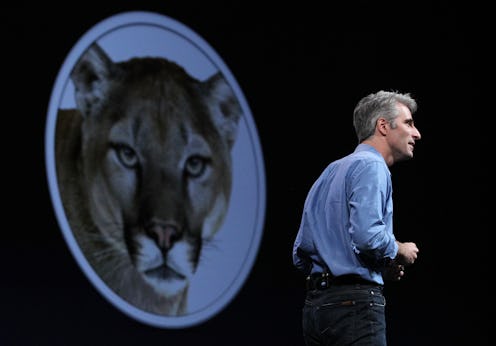Life
The Catamount Is Officially Extinct In The Northeast & People Are Mourning The Beloved Animal

The catamount, an animal you may have heard of but definitely haven't seen in the wild, will be declared extinct decades after its last known sighting. The U.S. Fish and Wildlife Service announced the change this week. The catamount, also called the eastern cougar, was a mammal that roamed Michigan, Maine, Vermont, Tennessee and parts of Canada. According to the Fish and Wildlife Service, most of the animals likely disappeared in the 1800s, and the last official sighting was in 1938. The agency first announced that the animal was likely extinct in 2011, and the updated announcement comes after an extensive review. Now researchers have confirmation of what they've suspected for a long time: The catamount is officially, officially extinct. From the Fish and Wildlife Service press release:
The U.S. Fish and Wildlife Service is removing the extinct eastern cougar subspecies (Felis concolor couguar) from the Federal List of Threatened and Endangered Wildlife, correcting a lingering anomaly that listed the species despite it likely having gone extinct many decades before the Endangered Species Act (ESA) was even enacted. Data from researchers, 21 states and Canadian provinces across the subspecies’ former eastern North American range indicate the eastern cougar likely disappeared forever at least 70 years ago.
According to the Fish and Wildlife Service, the animal went extinct because of deforestation and overhunting. The catamount will officially be moved from the endangered species list to the extinct species list on Feb. 22. Even though the extinction classification is long overdue and the animal is best known today as the University of Vermont mascot, some people still mourned the news on Twitter.
Interestingly, the catamount has become a bit of an urban legend over the years. Even though Fish and Wildlife Services says there haven't been any sightings in 80 years, people in the northeastern U.S. say they've seen the eastern cougar recently. That's one of the reasons it's been nicknamed "ghost cat" — another reason is that some scientists doubt the eastern cougar ever existed in the first place, per a Scientific American article published after the agency's 2011 announcement.
The agency says in its release that most of the recent sightings are of other wild cougars that have traveled an impressive distance, like a cougar that made it from South Dakota to Connecticut in 2011. And the U.S. government doesn't seem convinced by the public's claims, even though there are Facebook groups dedicated to reported sightings. The press release says they've analyzed hundreds of reports of eastern cougars from the public in both 2011 and 2015 and found no evidence that the cat has actually been spotted since the 1900s. From the announcement:
While many suspected cougar sightings are probably mistakenly identified bobcats or other animals, cougars do occasionally occur in eastern North America, but they are cougars of other subspecies: either Florida panthers, animals dispersing from western populations, or animals that have been released or escaped from captivity. The conclusions are based on a review of more than 100 credible studies dating back to 1900.
The agency is still protecting the Florida panther, an endangered cougar subspecies in southern Florida, per the announcement. Even though the eastern cougar has likely been gone for a long time and the announcement isn't surprising news, humans don't have a great track record when it comes to extinction and animals. The eastern cougar disappeared almost entirely because of human intervention, although it's safe to say that people living in the 19th century didn't have the information we have about the animal. The eastern cougar's extinction is a reminder that our actions can change the environment irreparably, and there's no excuse for driving animals into extinction.